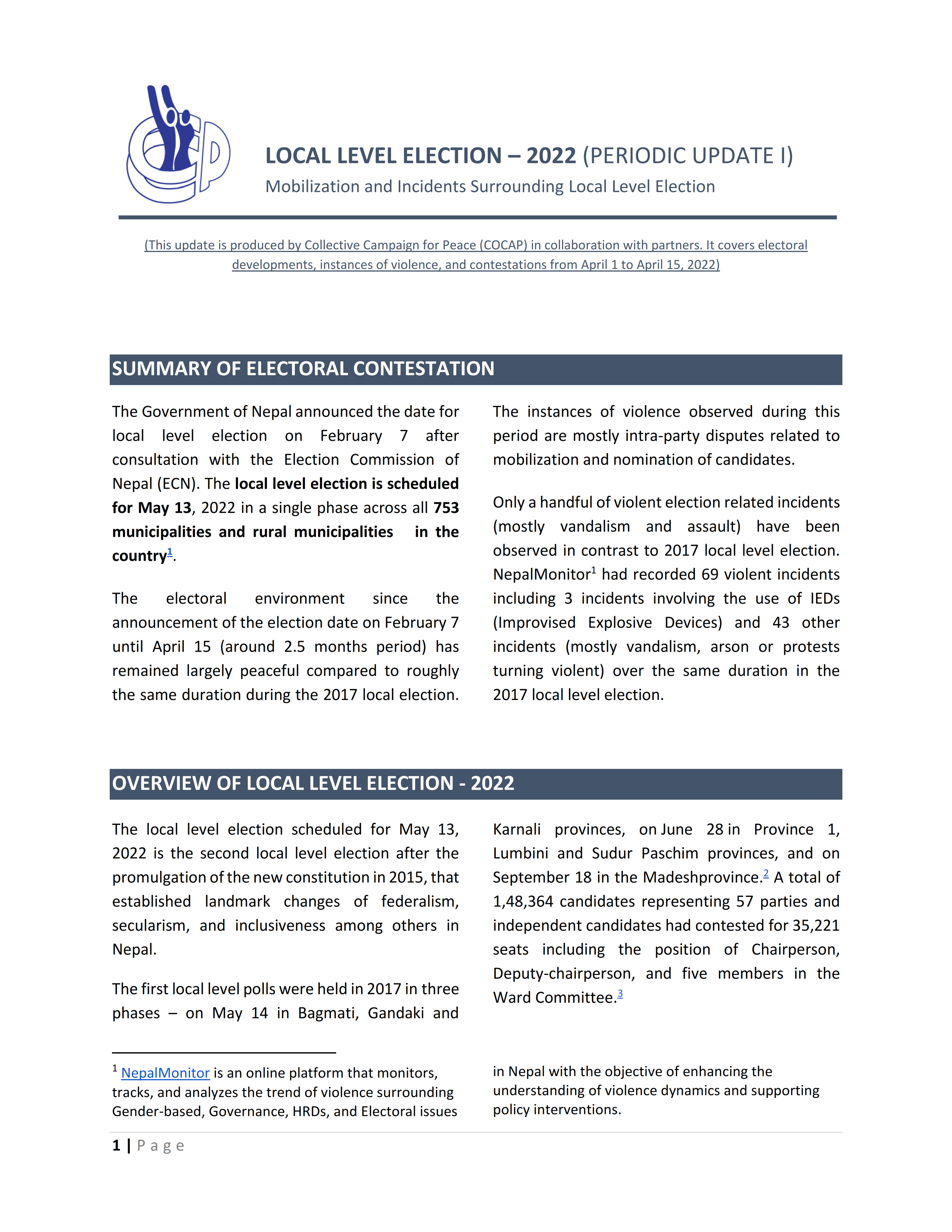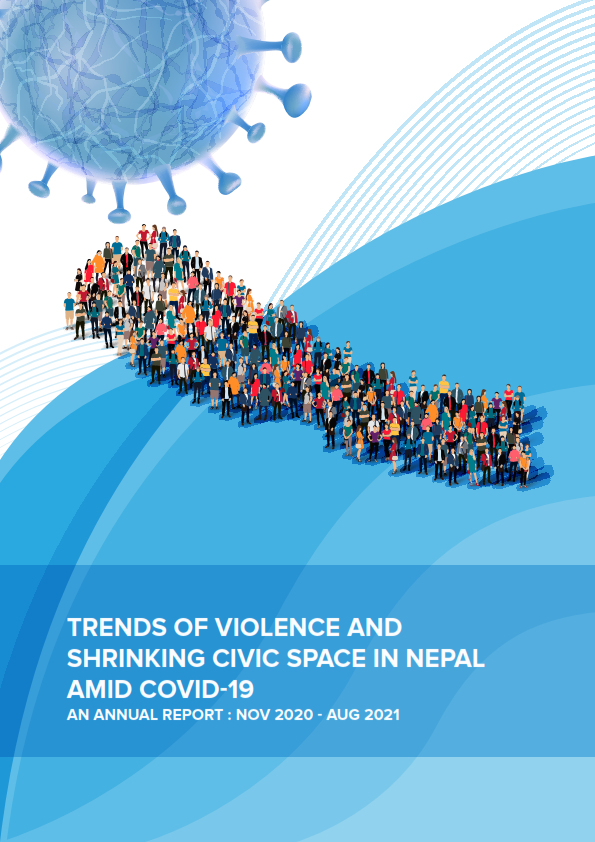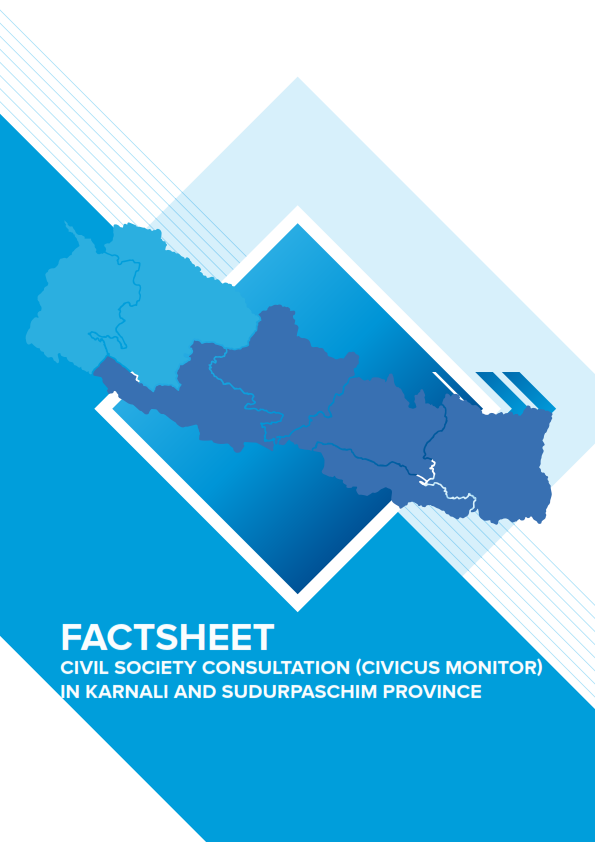Incident Reports
THRD Alliance: Birgunj border blockade lifted after 135 days, and situation on ground
2016-02-08
On February 4, 2015, top leaders of United Democratic Madhesi Front (UDMF) informed the media about an informal agreement among the four constituents (Madhes-based parties) of the UDMF to lift around five-month-long blockade at Nepal-India checkpoints. The UDMF leaders had announced that their meeting in the capital on February 6, 2015, would make the decision and announce the lifting of border blockade. However, on February 5, local smugglers backed by the local administration and some customs agents from both Nepal and India sides, all at once, attacked protesters at the border -- who were few in number -- and cleared the obstructions at the Friendship bridge between Birgunj (Nepal) and Raxaul (India) at around 1:30 pm, according to our human rights defenders. Our HR monitors on the ground found that locals from villages around Raxaul (India), and smugglers from Raxaul and Nepal attacked protesters when they were few in number. To clear the obstruction, they have burnt down tents and destroyed temporary shelters that protesters had built on the Nepal-India friendship bridge. Immediately after the incident, local demonstrators from Birgunj and neighbouring areas gathered at the borders and held a consultation with the Indian side. But they lacked unity among them. One of them, Terai-Madhes Democratic Party (TMDP) General Secretary Jitendra Sonal said to the Indian locals and attackers, “Provide us just two days’ time. We ourselves will withdraw the blockade.” After they did not listen to Madhesi leader Sonal, local demonstrators returned to Nepali side. At border areas in Nepali side, around 100 security personnel were deployed soon after the incident and kept on standby. However, there was no police intervention. By the time, around 50 small and big cargo vehicles from India and Nepal entered both sides, hundreds of people gathered in the border areas. With the number of people from Birgunj and surrounding areas of Nepali side approaching to the border, the number of security personnel deployed there were increased as well. As per an eyewitness who preferred to be anonymous, some Nepali police in plainclothes were among Indian locals and smugglers encouraging to send the vehicles and enter their goods to Nepal. Nepali police assured them that they would provide security to their vehicles in Nepal’s side. When there was the likelihood of violence at the borders, agitating Madhesi party leaders requested the attackers for some period so that they could block the border for at least an hour and formally decide about the lifting of the blockade. But those at Indian side did not accept the agitators’ proposal. Subsequently, the demonstrators took the border under their control for half an hour but they couldn’t continue the blockade because of strong objection by local villagers from India and traders who outnumbered the protesters. However, there was the possibility of clashes between the Indians and protesters. Had they clashed each other, police could have charged batons on protesters under the pretext of bringing the situation under control.
The security personnel, who were placed on standby, had also warned the protesters of action when there is tension at the border. By February 7, 2015, local demonstrators have already made three attempts (First on February 5, the second attempt at 2 pm on February 6 and third attempt on February 7) to create the blockade at Birgunj-Raxaul border again with a view to taking their ownership of removing the blockade by themselves. Local leaders and cadres -- who had been staging a sit-in protest at the border since the last five months -- were not informed by top UDMF leaders about the reasons behind lifting the blockade. After the blockade was ended forcefully with the active involvement of smugglers backed by the local administration at a time when agitating parties themselves had earlier set to end the blockade through their formal meeting. The way the border has been opened gave sense to the Madhesi community that they are “losers” since no formal method was adopted to end the blockade. A total of 11 demonstrators in Birgunj areas (7 in Birgunj, 1 in Kalaiya, and 3 in Rautahat) were killed in police firing during protests related to the constitution. Birgunj border point, which is the shortest distance from the capital, is used to import around 70-75 per cent of petroleum products to the country from India. According to Birgunj Customs Office, revenues amounting to an average of Rs 300 million per day are generated via the Birgunj customs point alone when there is a normal movement of supplies. However, the border blockade by Madhesi protesters remained for 135 days. A huge loss of economies incurred because of the general strike and border blockade in Terai. This has led to developing realisation among the general public that the longest ever movement in the country’s history launched by Madhesi and Tharu communities for the issue of social justice, human rights and democracy have ended without any achievement. Their sacrifice of lives and properties during peaceful demonstrations went in vain. It is high time for international communities to exert pressure on Nepal government to reach the deal with agitating parties to bring in amendments on population-based representation in the upper house, citizenship and settling the provincial boundary disputes through a political mechanism. Till there is the assurance of investigation into the killings of protesters by the state’s excessive use of force to crackdown the movement, the people in Terai will not regain belief and confidence in the rule of law and state mechanism. This will only help the country normalizing the supplies in a sustainable manner, and bring peace and stable in the Terai region.
Related Reports
Governance / Kathmandu
Medical education concern committee protest by banging plates and whistling
Governance / Darchula
Workers padlock school citing non-receipt of wages for more than a year
Governance / Sunsari
Prohibitory order issued in Dharan, tightening at entry points
Governance / Morang
Students of Eastern College in Biratnagar on protest
Related Trend Analysis
Analysis
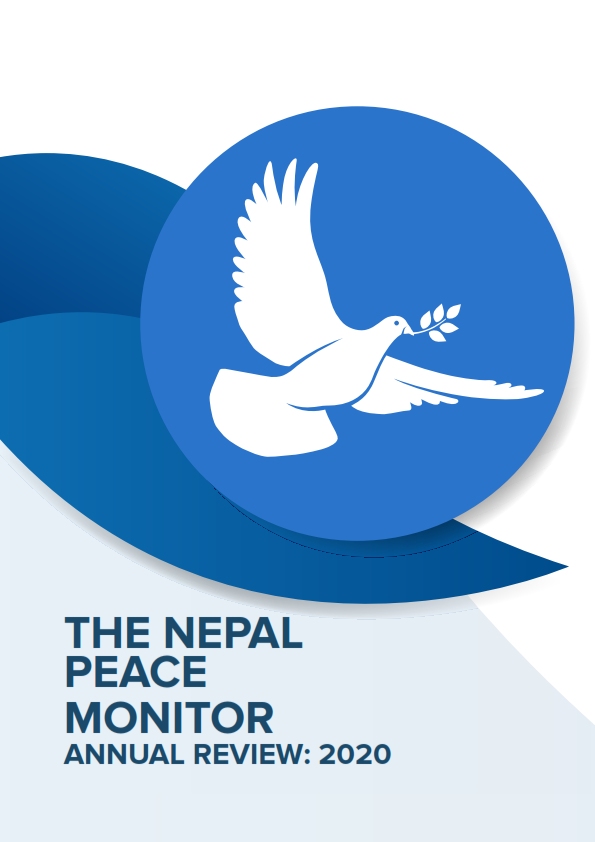
THE NEPAL PEACE MONITOR ANNUAL REVIEW: 2020
October 25, 2021
Human Trafficking / LGBT+ Rights / GBV / Political / Children’s Rights / Senior Citizens’ Rights / HRD Issues / Human Rights / Interpersonal Violence / Governance / Covid-19 / Civic-Space / PwD
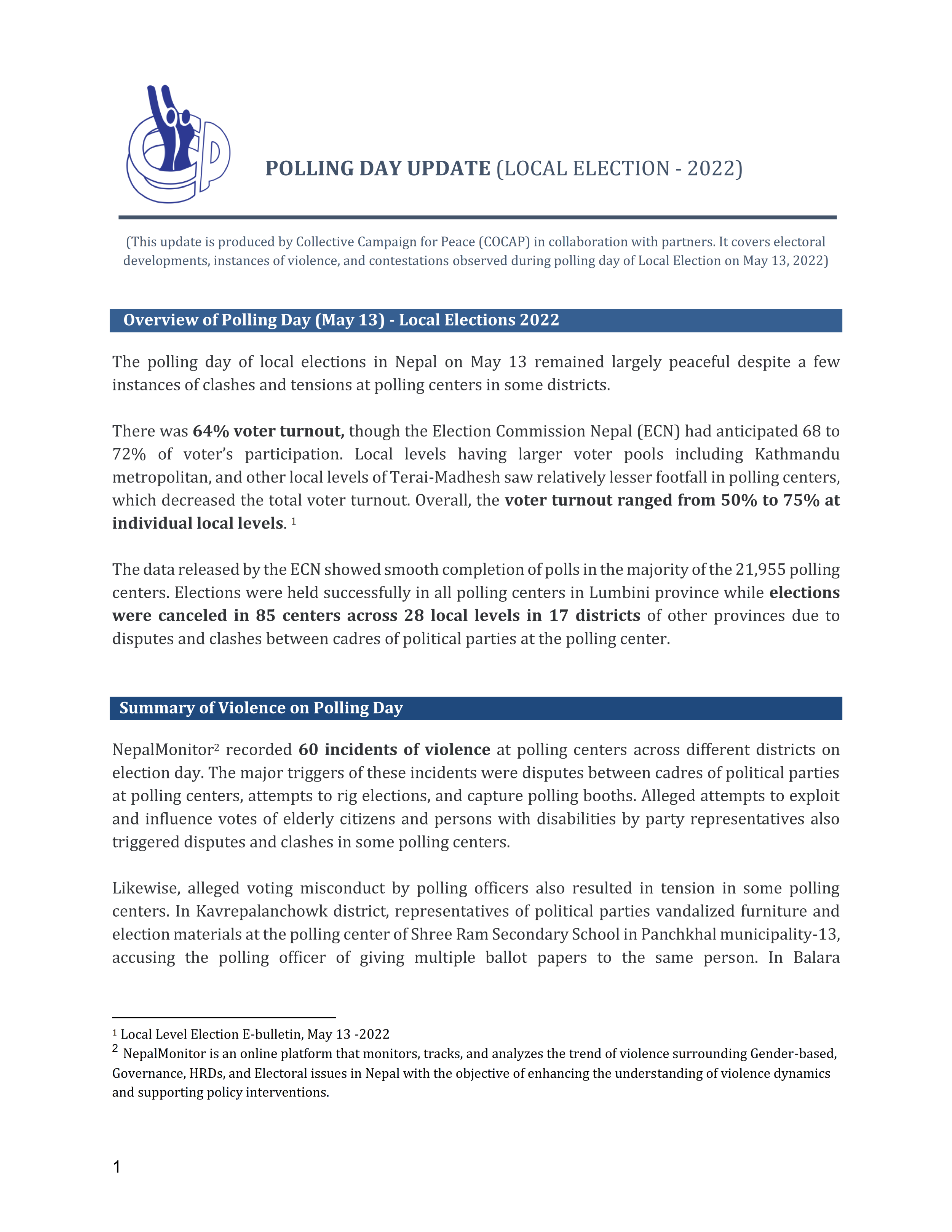
_001.png)
